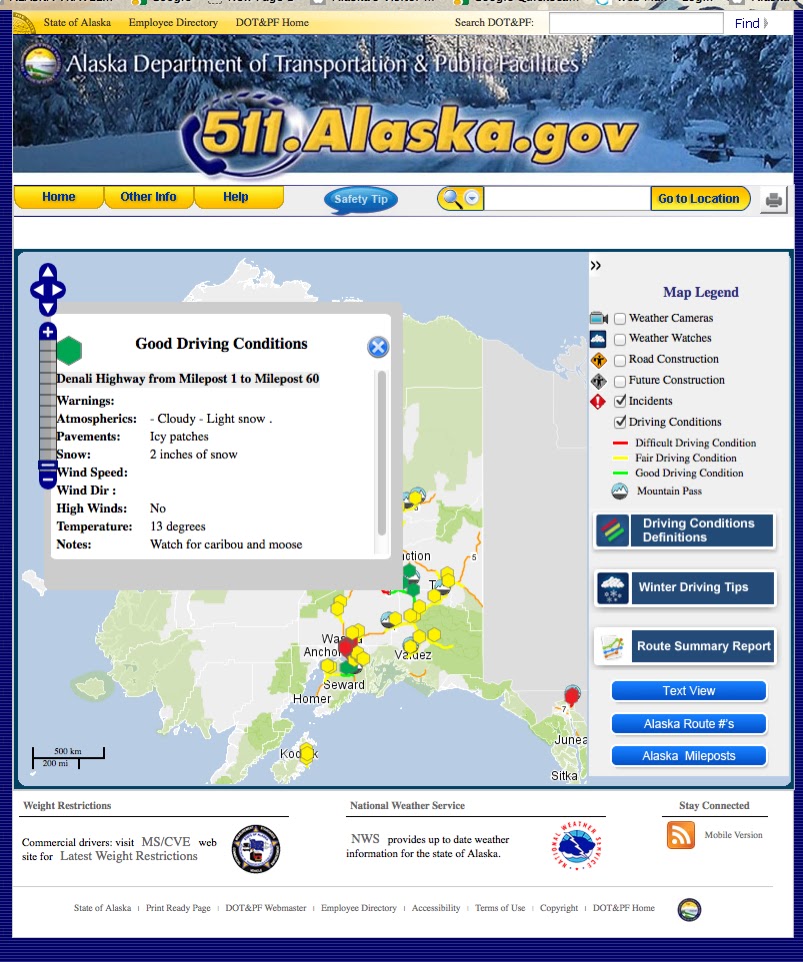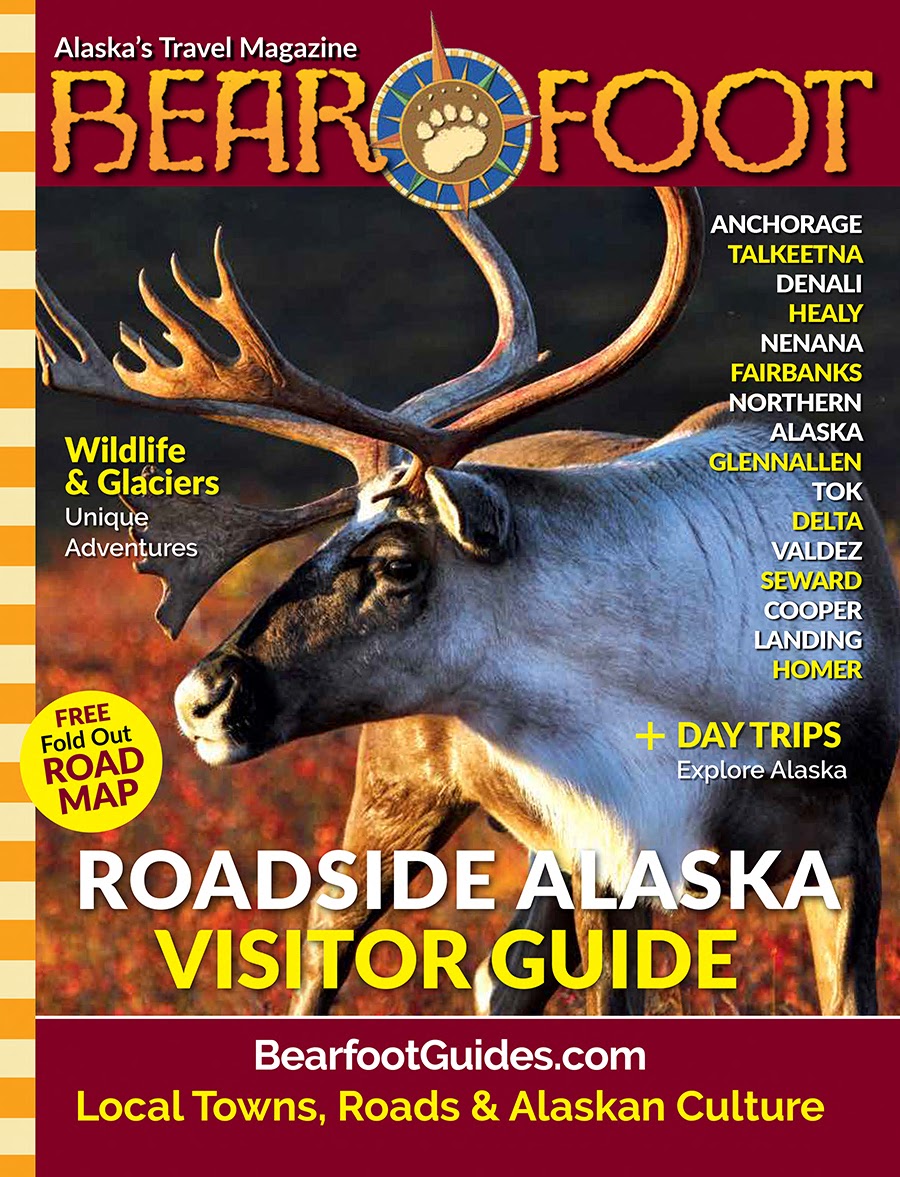Canadian Gold Mining Company Threatens Takeover Of Three Alaskan Highways
Trucks As Long As A Boeing 737 To Leave Every 12 Minutes, Round The Clock, 24/7... For At Least 5 Years "A Mining Haul Road For A Pri...
https://www.countryjournal2020.com/2023/08/canadian-gold-mining-company-threatens.html
Trucks As Long As A Boeing 737 To Leave Every 12 Minutes, Round The Clock, 24/7... For At Least 5 Years
"A Mining Haul Road For A Private Corporation"
Former Governor Frank Murkowski Warns
Trucks Will Cross Narrow, Substandard Bridges Built In 1944
250 Miles Of The Alcan, Richardson & Steese Highways Will See Disruption Rivaling That Of Trans-Alaska Pipeline
Trucks Will Pass Through Every Roadside Town On Route
A powerful Canadian gold mining company is threatening to take over Alaska’s public highways north of the Copper Valley.
Manh Choh Kinross, a Canadian mining company from Ontario, intends to run double trucks day and night through every town and community on much of the Alcan, the upper Richardson and the lower Steese Highway .
Their open pit mine is in Tetlin. Their processing mill is at Fort Knox, north of Fairbanks off the Steese. The company will be using Fort Knox because, they say, it’s more cost effective to transport the ore there instead of building an on-site mill at Tetlin. It’s a 250-mile drive between Tetlin and Fort Knox; a five-hour trip, one way, at 50 mph. The trucks are estimated to be going out once every 12 minutes, round-the-clock. There are going to be an estimated 120 trucks every day. Kinross also owns Fort Knox.
A Mining Haul Road
The plan is triggering concern from the public, despite the company’s promise that the work will support “between 100 and 200 good-paying jobs." And that they are now hiring.
Even former Alaska Governor Frank Murkowski (who was also a U.S. Senator) has stepped up with his fears. He’s not concerned about the mine itself, but he is worried about its impact on Alaska’s roads.
In a recent commentary in the Anchorage Daily News, entitled "Avoiding a highway disaster," Frank Murkowski questioned turning a "huge section" of Alaska's only "permanent route to Canada and the rest of the world...into a mining haul road for a private corporation."
He questioned using Alaska's highways "already in poor shape," for ore trucks, and declared the highways "will surely take a beating." Murkowski worried about "heavy truck traffic" and its damage to the asphalt. He questioned how many trucks would come down the road. And he also questioned the need for processing the ore so far away from the mine, and the lack of a railroad for easier transport.
Although he praised the project for potentially producing a huge amount of gold, Murkowski seriously questioned its impact on businesses, tourist traffic, military convoys and "more than 280 school bus stops.”
Towns On The Route
Communities along the truck route – Tok, Delta Junction, Salcha, North Pole, Fairbanks and Fox – are bracing for a new reality. The trucks will head down the primary street of most of the towns except Fairbanks, where it will take the main highway out of town to the north.
Affected towns are trying to forestall problems. In Delta Junction, for example, a permanent air medevac service will be stationed at the Delta Airport. Delta believes that their ground ambulances will not be able to get through the trucks in a timely manner, trying to drive to Fairbanks Memorial Hospital with the sick and injured.
.
Tok calls itself "Mainstreet Alaska." It's currently known not for mining trucks but for its welcome to travelers coming in from the border.
Delta Junction, a northern farming community, is known as “The Friendly Frontier” and has a large sign announcing that it’s the end of the Alaska Highway. Delta also has two historic log roadhouses.
Farther up the highway, Salcha is a sleepy riverfront community, with small lodges and a marina.
North Pole is a military town, known for its year-round celebration of Christmas.
Fairbanks calls itself “The Golden Heart City” and is one of Alaska’s larger cities. It’s known for its strong interest in local history, its active volunteers and its community service. Fairbanks is a town that is founded on old-time historic gold mining.
Although the Canadian company says the route doesn’t go through downtown Fairbanks, it will enter Fairbanks on the Richardson, and pass through a heavily-traveled part of town, before heading up the Steese to the little town of Fox – which is known for its historic gold dredge and brewery.
 |
| Go To Mine Company Site |
What The Company Says
According to the Canadian company, there shouldn’t be much impact from the trucks. The company claims that trucking to the mill is actually good for the environment. The company says on its web site that “using existing infrastructure” will reduce the environmental impact and prohibitive costs of a mill and tailings storage facility on site.
The company claims that the trucking will also benefit the towns along the way. The website says the trucking will “boost the economy along the highway corridor with good-paying jobs and opportunities for local businesses.”
The company’s website says:
“Trucks will operate 24 hours a day. On average: 60 trips per day, 2.5 trips per hour when conditions allow. Traffic volumes will increase traffic by 5-20% in remote locations and less than 1% in the Fairbanks area.”
Infrastructure Bill To Pay For Roadwork, Mine Says
Although the company is from Canada, it will benefit from America’s 2021 federal Infrastructure Investment and Jobs Act, which the company says will pay for road improvements to accommodate their project. The company mentions “up to 10 passing lanes, asphalt resurfacing and other work” including five bridges along the way that are scheduled to be replaced through federal funds.
Highway “wear and tear” should not be a problem, either, the mining company writes:
“These trucks will carry legal loads that do not require any special permits or exemptions. Total vehicle length will be 95’, similar to double fuel and double cargo trailers used in Alaska today, with a payload of about 50 tons and a total gross vehicle weight of 82.5 tons per vehicle. Engineers at the trailer manufacturing company suggested a change to 16 axles and 36 tires with a wider tread.
Bridges On Route Are Substandard &
Won't Be Replaced For Several Years
Between Tok and Delta Junction, the trucks will cross three very long and narrow bridges. Those bridges are leftovers from a distant time. The rivers are wide, and the bridges are barely two-lane. For those who remember the old Gakona River bridge before it was replaced, the Gakona bridge had an arched steel frame over the bridge deck. These bridges on the Alcan look a lot like the old Gakona River bridge did – but there isn't just one frame. The Gerstle River Bridge looks like one Gakona bridge after another, linked together like the multiple cabins of an old Alaskan shotgun roadhouse.
The bridges the trucks will cross every few minutes on the Alcan are the Johnson River Bridge, the Gerstle River Bridge and the Robertson River Bridge. (The Robertson River was named after Sgt. Cady Robertson, a member of Lt. Henry T. Allen's 1885 exploratory expedition of the Copper and Tanana Valleys.)
Getting between Tok and Delta might be a challenge, at least for now. According to the DOT, the Robertson River and Gerstle River bridges were both built in 1944 "and are well below modern standards for width.”
Between Tok and Delta Junction, the trucks will cross three very long and narrow bridges. Those bridges are leftovers from a distant time. The rivers are wide, and the bridges are barely two-lane. For those who remember the old Gakona River bridge before it was replaced, the Gakona bridge had an arched steel frame over the bridge deck. These bridges on the Alcan look a lot like the old Gakona River bridge did – but there isn't just one frame. The Gerstle River Bridge looks like one Gakona bridge after another, linked together like the multiple cabins of an old Alaskan shotgun roadhouse.
The bridges the trucks will cross every few minutes on the Alcan are the Johnson River Bridge, the Gerstle River Bridge and the Robertson River Bridge. (The Robertson River was named after Sgt. Cady Robertson, a member of Lt. Henry T. Allen's 1885 exploratory expedition of the Copper and Tanana Valleys.)
Getting between Tok and Delta might be a challenge, at least for now. According to the DOT, the Robertson River and Gerstle River bridges were both built in 1944 "and are well below modern standards for width.”
The DOT acknowledges, "The Gerstle River bridge is a height-restricted overhead-truss structure. These restrictions impede commercial truck loads and make them vulnerable to strikes and subsequent damage and load limitations."
DOT has announced it'll be working on these three bridges, replacing them.
It won't happen overnight. As of April, 2023, says DOT, the three Alcan bridge projects were "all currently in the preliminary design and environmental reconnaissance stage." The Department has released a project schedule for the bridges along the ore truck route, between Tok and Delta Junction.
The Gerstle River Bridge is not expected to be finished until 2027.
The bridge timeline is optimistic. With so many bridges being built across America, just getting the steel to build them is a problem. In Cooper Landing, which bypasses the roadside fishing town on the Sterling Highway in the Kenai, a single new bridge is under construction. It's a key part of the Cooper Landing bypass. Recently, the cost of that bridge has quadrupled – from its original estimate to $840 million.
 |
| The Gerstle River Bridge (Photo, DOT) |
Tourism Impact
The proposed trucking solution for the Canadian mining company will undoubtedly impact Fairbanks tourism. Delays and concerns about safety will divert much of the incoming Alcan border traffic into the Copper Valley.
Struggling against the 100-foot long trucks (which are the length of a Boeing 737) will prompt visitors to choose to take one of two detours off the Alcan into the Copper Valley. They can turn south, bailing out off the ore route, at either Tok or Delta Junction. From both towns, they'll end up at Gakona Junction.
This will change tourism. Typically – today – the Copper Valley is not the first leg of many visits by inbound travelers, but the last. Visitors often first go to Fairbanks.

















